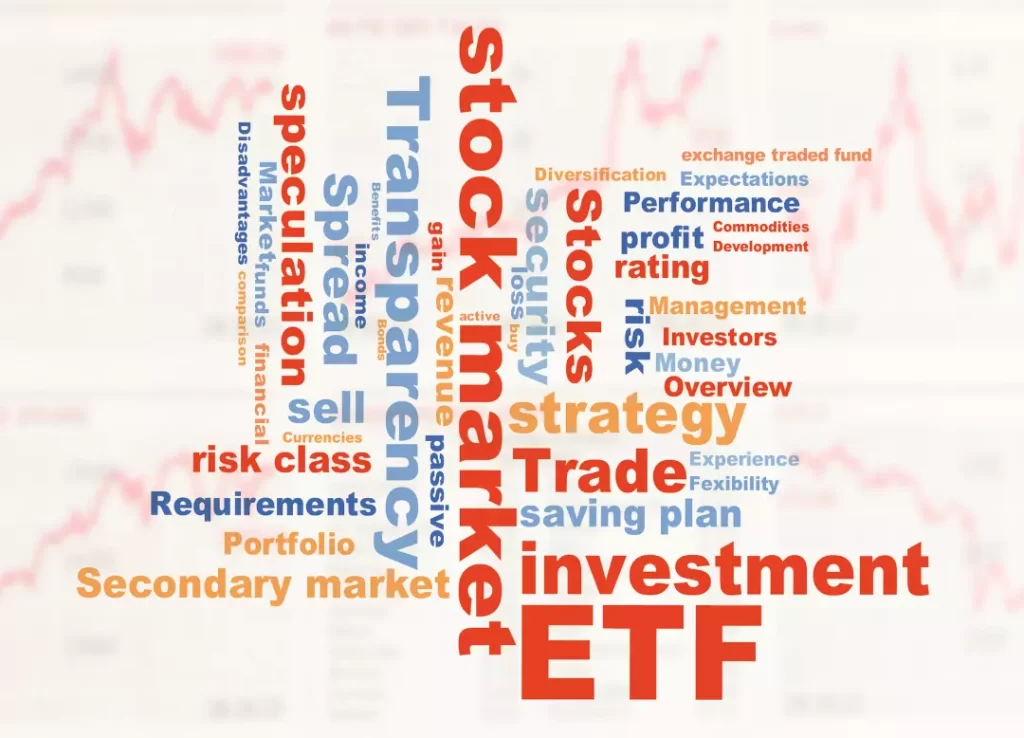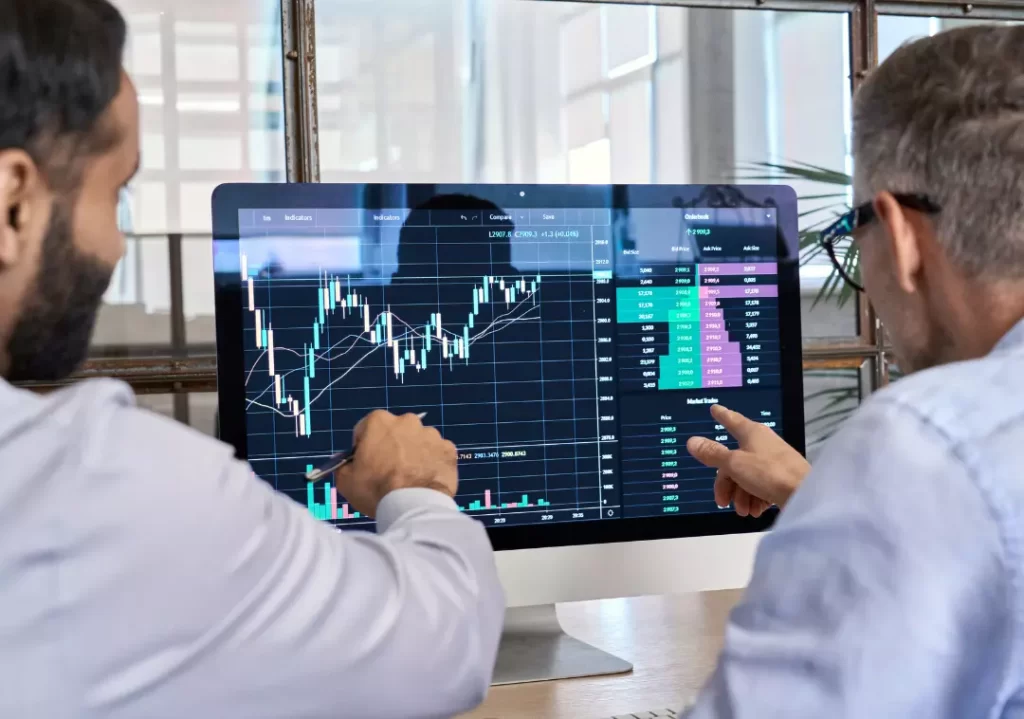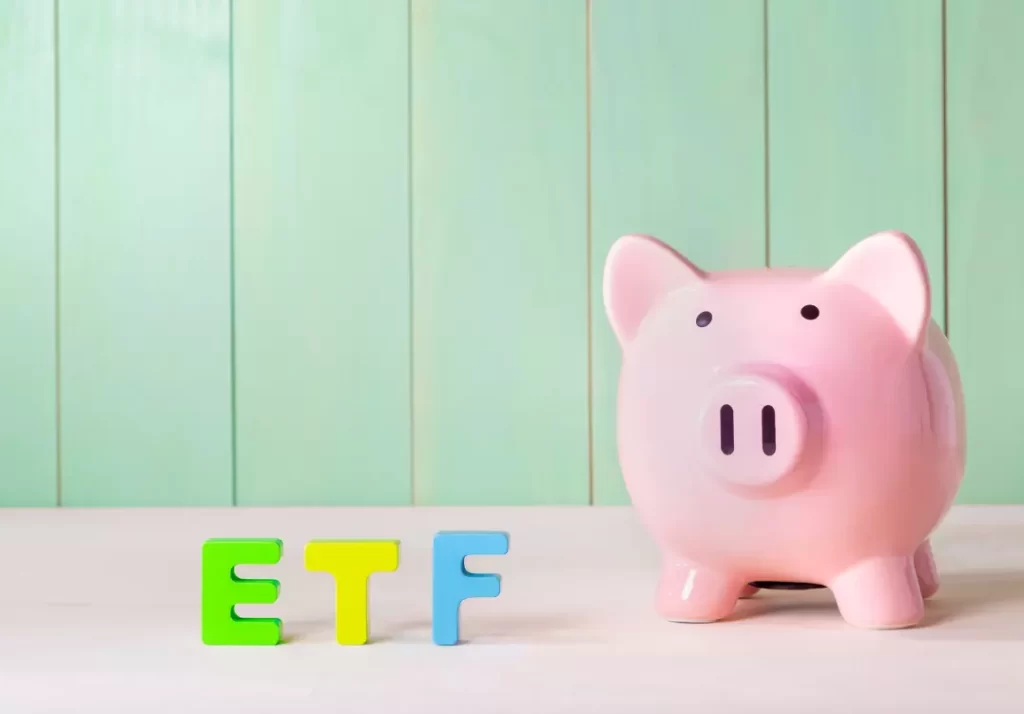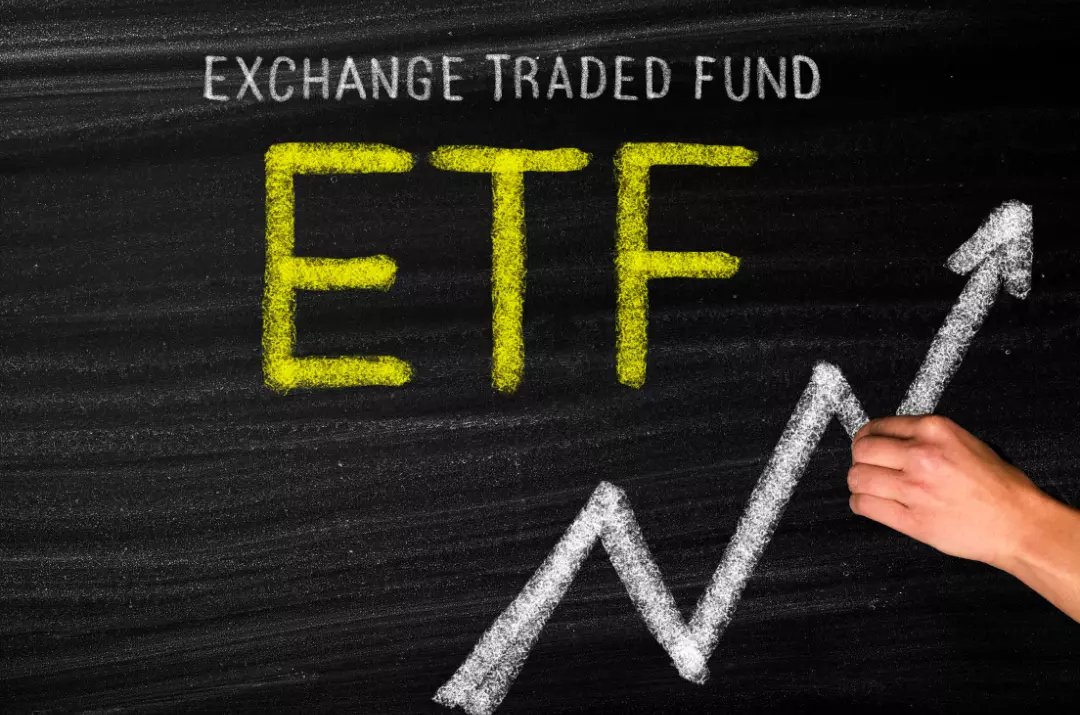What are exchange traded funds?
Table of Contents
ToggleHave you ever heard of Exchange Traded Funds (ETFs)? You might have some but not know what they are. As investors, we are always looking for ways to grow our portfolio and protect our savings. One way to do this is by investing in exchange traded funds (ETFs).
Exchange Traded Funds are a type of investment vehicle that allows you to invest in a basket of assets, such as stocks or bonds, without having to purchase each individual asset. In Australia, there are a number of ETF providers offering a wide range of investment options.
In this blog post, we’ll give you everything you need to know about an ETF, including the benefits and risks of investing in ETFs; the different types of ETFs available; methods on how to invest in ETFs; how to choose the right ETF for your investment portfolio; and tips for buying and selling ETFs. So, let’s get started!
What are exchange traded funds and how do they work in Australia
Exchange traded funds, or ETFs, are a type of investment fund that trades on stock exchanges. They are similar to index funds but differ in that they are exchange traded, meaning that they can be bought and sold like stocks.
ETFs typically track an underlying index, such as the S&P 500, but can also track commodities, currencies, or other assets. ETFs are popular because they offer investors exposure to a wide variety of asset classes in a single investment.
In Australia, Exchange traded funds have been available since 2001 and have become increasingly popular in recent years. There are now over 200 ETFs listed on the ASX with a combined value of over $40 billion.
ETFs are typically managed by large financial institutions, such as banks or asset managers. The largest ETF provider in Australia is Vanguard, with over $20 billion in assets under management.
ETFs are traded on stock exchanges and can be bought and sold like any other stock. They can be bought through a broker or online trading platform.
When you buy an ETF, you are buying shares in a fund that holds a basket of assets. For example, if you buy an S&P 500 ETF, you are buying shares in a fund that holds the 500 stocks that make up the S&P 500 index.
Because ETFs are exchange traded, they can be bought and sold throughout the day. This flexibility makes them a popular investment for traders and investors who want to take advantage of short-term market movements.
What is the difference between ETF and ETP?
While researching ETFs, you may have also encountered ETPs. Exchange traded funds (ETFs) and exchange traded products (ETPs) are both investment vehicles that are traded on an exchange.
Exchange traded funds generally track an index, a commodity, or a basket of assets and can be bought and sold like shares. ETPs include exchange traded notes (ETNs), exchange traded commodities (ETCs) and exchange traded currencies (ETCs).
The main difference between ETFs and ETPs is in the structure of the product. ETFs are structured as open-ended trusts, while ETPs are structured as debt instruments. This means that ETFs are not subject to counterparty risk, while ETPs may be.
ETFs are also required to have a published prospectus, while ETPs do not.
Investors should consider their investment objectives and risks carefully before investing in exchange traded products.

The Benefits of Investing in ETFs
There are several key benefits to investing in ETFs:
Diversification
By purchasing an ETF, you are instantly diversified across a basket of assets. This diversification reduces your risk and can lead to higher returns over time.
Cost-Effective
Exchange traded funds are generally more cost-effective than traditional managed funds. This is because they have lower fees and expenses.
Tax-Efficient
ETFs are also more tax-efficient than traditional managed funds. This is because they generate fewer capital gains taxes.
Liquidity
ETFs are highly liquid and can be bought and sold throughout the day. This flexibility is ideal for traders and investors who want to take advantage of short-term market movements.
If you’re looking for a cost-effective and tax-efficient way to invest, exchange traded funds (ETFs) could be the right choice for you. ETFs offer a number of key benefits, including diversification, liquidity, and low costs. However, there are also risks to be aware of before investing. These include counterparty risk, market risk, interest rate risk, and currency risk. When investing in ETFs, it’s important to choose a reputable provider and to diversify your portfolio across a range of different asset classes.
What are the risks in investing in ETFs?

Like all investments, there are risks involved with investing in ETFs. However, these risks can be mitigated by diversifying your portfolio across a range of different asset classes.
The main risks to be aware of are:
Counterparty Risk
This is the risk that the ETF provider will default on their obligations. This is typically not a concern with large and well-established providers.
Market Risk
This is the risk that the underlying assets will fall in value. This risk can be mitigated by diversifying your portfolio across a range of different asset classes.
Interest Rate Risk
This is the risk that rising interest rates will negatively impact the value of fixed-income assets, such as bonds. This risk can be mitigated by investing in ETFs that track floating-rate assets, such as short-term corporate bonds.
Currency Risk
This is the risk that changes in exchange rates will impact the value of foreign assets. This risk can be mitigated by investing in ETFs that track currency-hedged assets.
The different types of ETFs available in Australia
There are a number of exchange traded funds (ETFs) available in Australia, each with its own distinct features and benefits. Here is a quick overview of the different types of ETFs that you can choose from:
Equity ETFs
These funds invest in a basket of stocks that track a particular index, such as the ASX 200 or the S&P/ASX 300. Equity ETFs offer exposure to the Australian stock market, without the need to directly purchase individual shares.
International ETFs
These funds provide exposure to foreign markets, such as the US or Europe. International ETFs can be a great way to diversify your portfolio and reduce your overall risk.
Property ETFs
These funds invest in a basket of property-related assets, such as real estate investment trusts (REITs) or exchange traded property securities (ETPS). Property ETFs offer exposure to the Australian property market, without the need to directly purchase individual properties.
Fixed Income ETFs
These funds invest in a basket of property-related assets, such as real estate investment trusts (REITs) or exchange traded property securities (ETPS). Property ETFs offer exposure to the Australian property market, without the need to directly purchase individual properties.
Commodity ETFs
These funds invest in a basket of commodities, such as gold or oil. Commodity ETFs can be a great way to hedge against inflation and protect your portfolio from market volatility.
Currency ETFs
These funds invest in a basket of foreign currencies, such as the US dollar or the Euro. Currency ETFs can be used to hedge against exchange rate risk, or to speculate on the movement of foreign exchange rates.
Alternative ETFs
These funds invest in a basket of alternative assets, such as hedge funds or private equity. Alternative ETFs can offer exposure to investments that are not typically accessible to retail investors.
Leveraged ETFs
These funds use financial derivatives to provide leveraged exposure to an underlying asset, such as an index or a commodity. Leveraged ETFs can be used to magnify your returns, but they also come with higher risks.
Inverse ETFs
These funds use financial derivatives to provide inverse exposure to an underlying asset, such as an index or a commodity. Inverse ETFs can be used to hedge your portfolio or profit from market declines.
Choosing the right ETF for your investment goals will depend on a number of factors, including your risk tolerance and time horizon. It is important to speak to a professional financial advisor to get tailored advice before investing in any ETF.
How to invest in ETFs?

Investing in Exchange traded funds is a straightforward process. First, you need to choose an ETF provider. There are a number of providers to choose from, including Vanguard, BlackRock, and State Street Global Advisors.
Once you have chosen a provider, you need to open an account with them. This can be done online or through a broker.
Once your account is open, you can then start buying and selling ETFs. It’s important to remember that ETFs are traded on stock exchanges, so their prices can fluctuate throughout the day.
How to choose the right ETF for your investment portfolio?
If you’re looking to invest in exchange traded funds (ETFs) in Australia, there are a few things you need to consider before making your decision. Here are three tips on how to choose the right ETF for your investment portfolio:
Consider your investment goals
It’s important to think about your investment goals before investing in an ETF. Are you looking to generate income or grow your capital? Do you have a short-term or long-term time horizon? Once you know what you’re hoping to achieve with your investment, you can start researching which ETFs align with your goals.
Compare fees and expenses
All investments come with associated costs, and ETFs are no different. When you’re comparing ETFs, be sure to take a close look at the fees and expenses associated with each one. These costs can eat into your returns, so it’s important to choose an ETF with low fees.
Consider the risk level
It’s also important to think about the level of risk you’re comfortable taking on before investing in an ETF. Some ETFs are more volatile than others, so it’s important to find one that aligns with your risk tolerance.
By following these tips, you can be sure to choose the right ETF for your investment portfolio.
Tips for buying and selling ETFs in Australia
If you’re looking to invest in exchange traded funds (ETFs) in Australia, there are a few tips you need to know on how to buy and sell ETFs so that you can make the most of your investment.
Due to their flexibility and ease of trade, ETFs are becoming increasingly popular as an investment option as well. They also offer investors exposure to a wide range of asset classes and sectors, which can be helpful in diversifying a portfolio.
When buying ETFs, it’s important to consider the fees charged by the provider. Some providers charge higher fees than others, so it’s worth shopping around to find the best deal. It’s also important to remember that ETFs are subject to market volatility, so it’s important to have a clear investment strategy in place before investing.
When selling ETFs, it’s important to remember that you may have to pay capital gains tax on any profits you make. It’s also worth considering the fees charged by your provider, as these can eat into your profits. Finally, it’s important to have a clear exit strategy in place so that you know when to sell your ETFs.
Following these tips will help you make the most of your investment in exchange traded funds. With a little research and planning, you can trade ETFs with confidence and maximise your returns.
Exchange traded funds can be a great investment for those looking to build their portfolio and who want the benefits of diversification without having to do all the research themselves. They are also a good option for people who want to invest in specific sectors or regions but don’t have the time or knowledge to pick individual stocks. However, like any other investment vehicle, there are risks associated with investing in ETFs. If you’re thinking about adding ETFs to your portfolio, please contact Wealth Factory so we can help you find the right funds for your needs.









